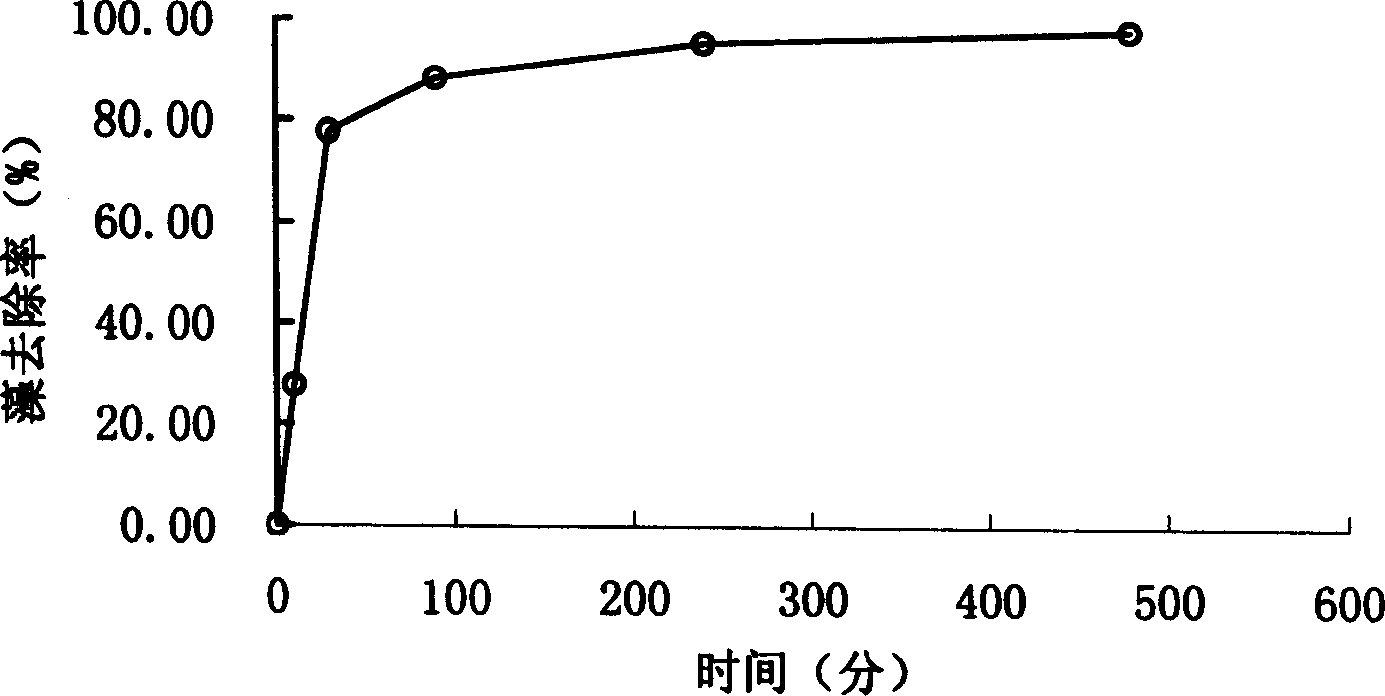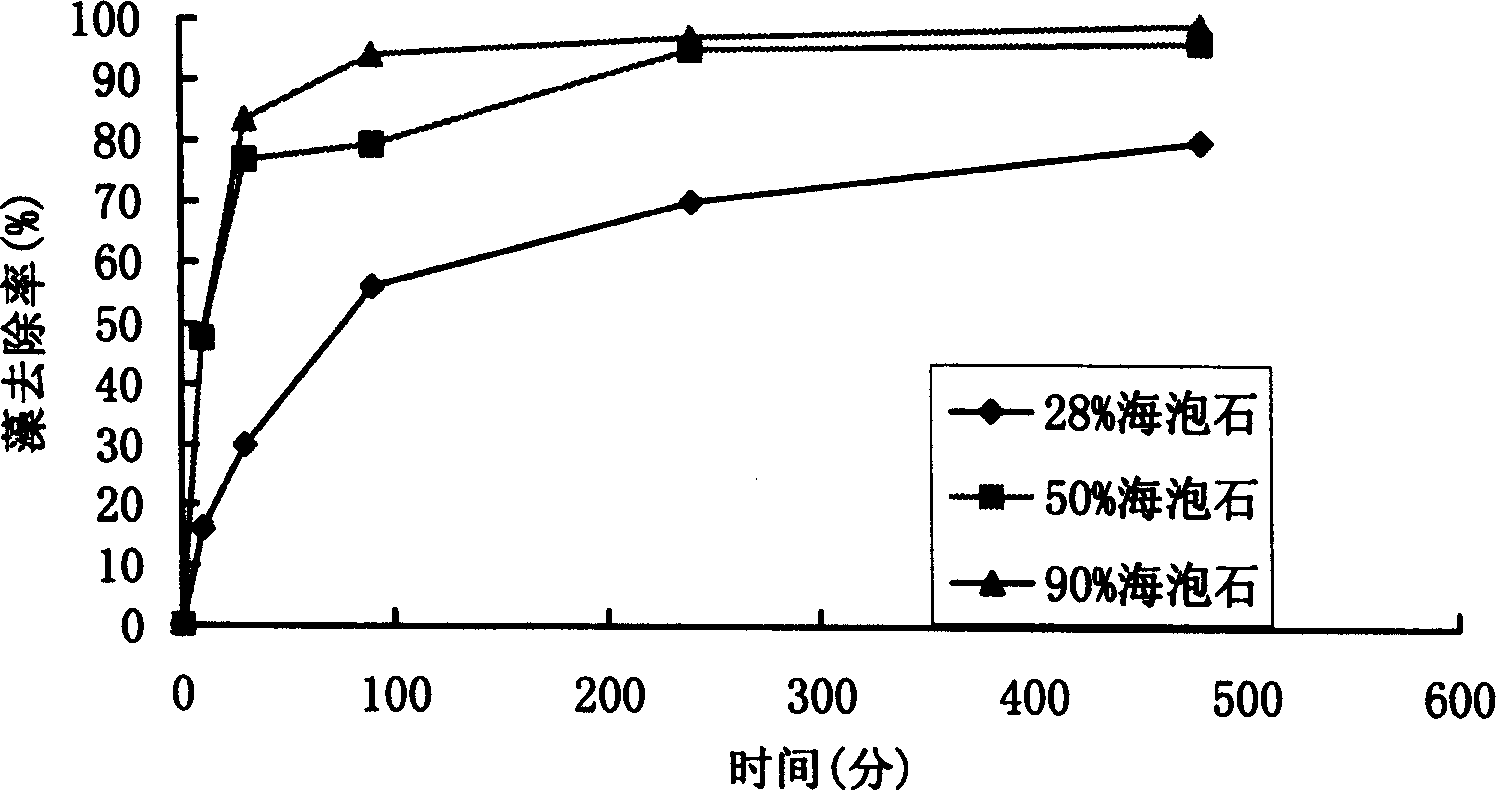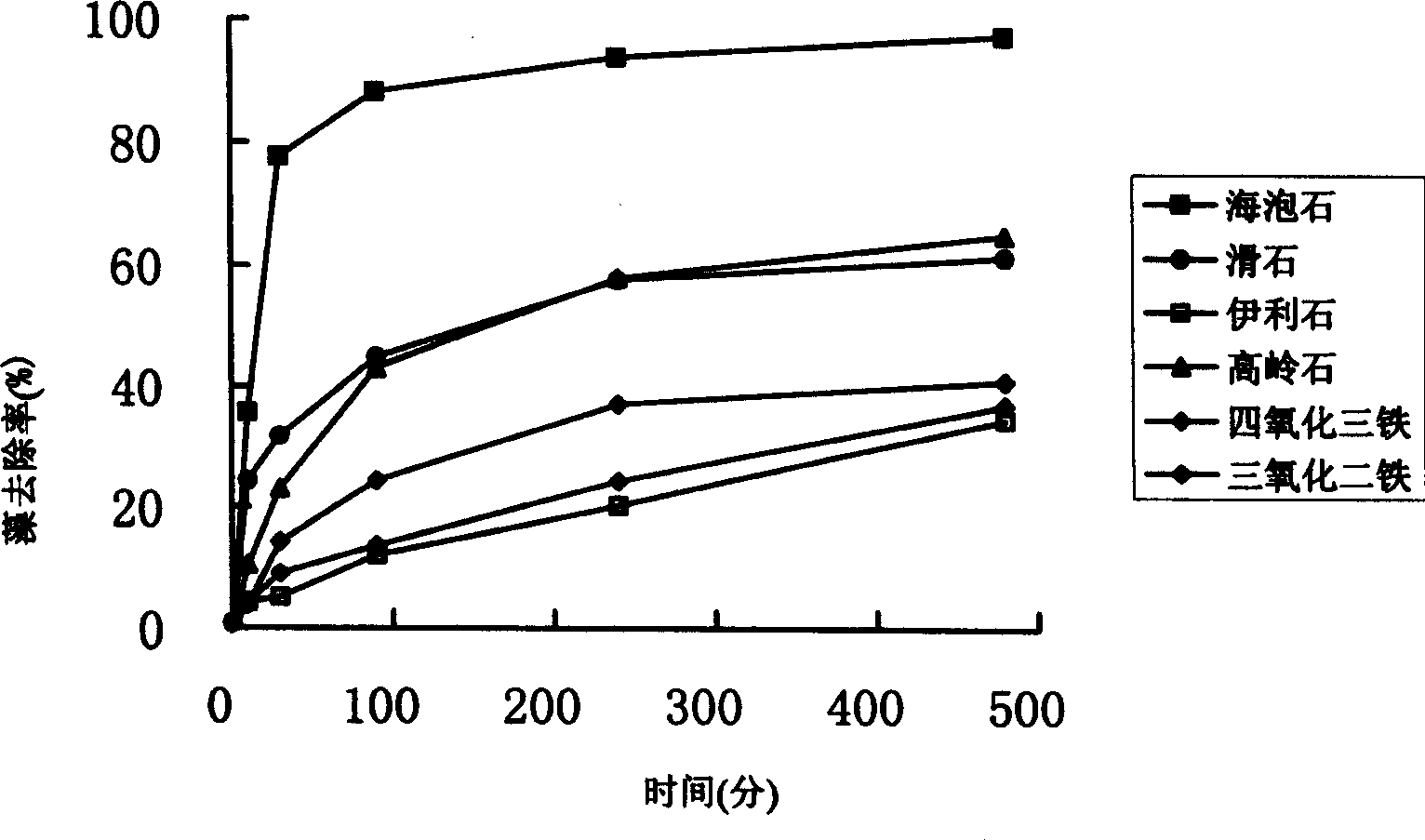Method for treatment of sea red tides and fresh water bloom
A seawater and red tide technology, applied in separation methods, chemical instruments and methods, flocculation/sedimentation water/sewage treatment, etc., can solve problems such as accelerated decomposition and no substantial improvement
- Summary
- Abstract
- Description
- Claims
- Application Information
AI Technical Summary
Problems solved by technology
Method used
Image
Examples
Embodiment 1
[0019] Embodiment 1 sepiolite extraction preparation
[0020] Dry the raw sepiolite, crush it to a certain particle size (70-180 mesh), disperse it in distilled water, prepare a suspension with a concentration of about 10g / L, stir it and let it stand for 30 minutes, and take out the supernatant by siphoning. The obtained supernatant was centrifuged at 12,000 rpm for 10 minutes, the obtained sediment was collected, dried at 65°C for 12 hours, ground to 180 mesh, and analyzed by X-ray diffraction, the purity of the obtained sepiolite was over 90%.
Embodiment 2
[0021] Example 2 Fe 3+ Modified sepiolite
[0022] Take by weighing the prepared 1.00g sepiolite (90%) of embodiment 1, be dispersed in 50mL, the Fe of 1000mg / L 3+ solution (with NH 4 Fe(SO 4 ) 2 12H 2 O preparation), shake at room temperature for 5 hours, centrifuge at 12,000 rpm for 10 minutes, collect the obtained sepiolite and dry it at 65°C for 12 hours, and grind to 180 meshes to obtain modified sepiolite.
Embodiment 3
[0023] Embodiment 3 Sepiolite flocculation removes the embodiment of algae
[0024] Take by weighing 0.1g of sepiolite prepared in Example 1 in an 800ml beaker, add 500ml of it quickly and prepare a concentration of 4.78*10 6 The algae liquid of cell / ml (the algae liquid is prepared with 0.5% NaCl solution), is placed on the six-coagulation mixer and starts stirring immediately, and starts timing simultaneously. Stirring parameters are: rapid stirring at 600 rpm for 4 minutes, then transfer to 50 rpm and continue stirring for 2 minutes, and finally stop stirring and let stand. Samples were taken at about 3 cm below the liquid level every hour to measure the algal cell concentration, and the algal cell removal rate was calculated. The result is as figure 1 (dosage is 0.2g / l). Depend on figure 1 It can be seen that after 100 minutes of treatment, the algae removal rate has exceeded 90%, and after 300 minutes, the algae removal rate has exceeded 99%, which is close to complet...
PUM
 Login to View More
Login to View More Abstract
Description
Claims
Application Information
 Login to View More
Login to View More - R&D
- Intellectual Property
- Life Sciences
- Materials
- Tech Scout
- Unparalleled Data Quality
- Higher Quality Content
- 60% Fewer Hallucinations
Browse by: Latest US Patents, China's latest patents, Technical Efficacy Thesaurus, Application Domain, Technology Topic, Popular Technical Reports.
© 2025 PatSnap. All rights reserved.Legal|Privacy policy|Modern Slavery Act Transparency Statement|Sitemap|About US| Contact US: help@patsnap.com



